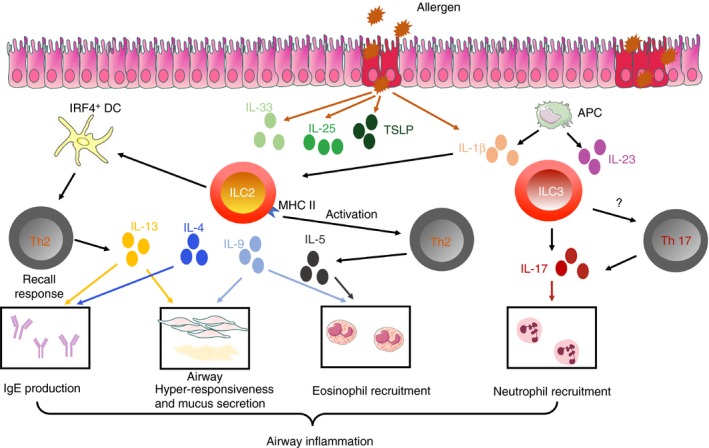Figure 3.

Innate lymphoid cells (ILCs) in allergic airway inflammation. In response to protease‐type allergens, airway epithelial cells release cytokines such as interleukin‐25 (IL‐25), IL33, thymic stromal lymphopoietin (TSLP) and IL‐1β, which all activate ILC2. Activated ILC2 produce type 2 cytokines, such as IL‐4, IL‐5, IL‐9 and IL‐13. Then they activate T helper type 2 (Th2) cells either directly, through MHCII expression, or through dendritic cells. Altogether, the released cytokines promote the different features of asthma, including airway hyper‐responsiveness, eosinophil accumulation and IgE production. IL‐1β produced by epithelial cells or alveolar macrophages can also activate ILC3, leading to the production of IL‐17, promoting the recruitment of neutrophils. ILC3 may also potentially activate Th17 cells.
